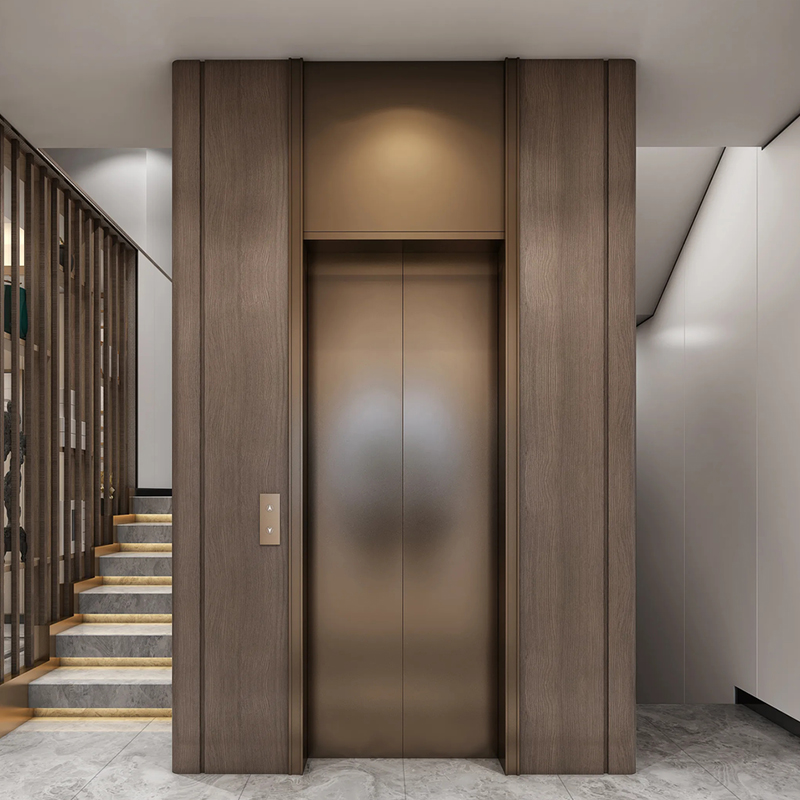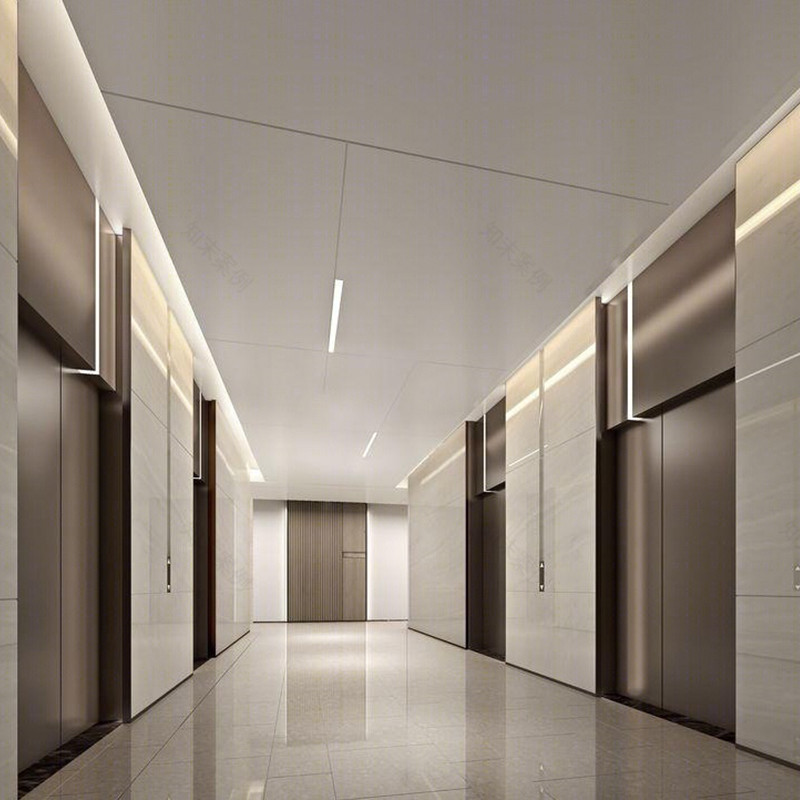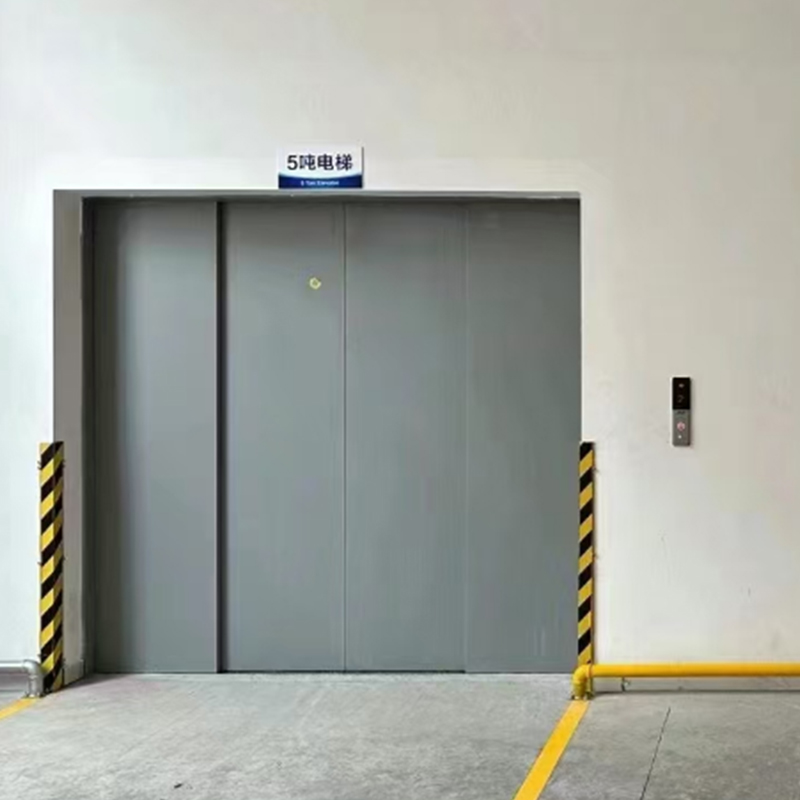
Traction platform elevator: vertical transportation solution for modern industry and commerce
Posted by Admin | 10 Jul
In modern buildings and industrial facilities, vertical transportation equipment plays a vital role. As an efficient and reliable lifting system, the traction platform elevator is gradually becoming the preferred transportation solution in industrial plants, commercial places and special facilities with its unique technical characteristics and wide application adaptability. This elevator perfectly combines traditional traction drive technology with open platform design, which not only retains the efficient and stable characteristics of the traction system, but also has the practicality and flexibility of the platform structure.
The perfect integration of traction drive and platform design
The core technology of the traction platform elevator lies in the traction drive system it adopts, which drives the steel wire rope or belt traction platform to lift and lower through an electric motor. Compared with the traditional hydraulic drive method, the traction system has obvious energy efficiency advantages. Its permanent magnet synchronous motor can automatically adjust the power output according to the load during operation, significantly reducing energy consumption. The application of the counterweight balancing system not only reduces the load on the motor, but also makes the elevator run more smoothly and smoothly, and can maintain a stable lifting speed even when carrying heavy goods.
The open platform design is another major feature of this type of elevator. This structure abandons the closed car of traditional elevators and adopts a flat or semi-enclosed platform, which greatly improves the convenience of loading and unloading goods. The platform surface is usually specially anti-slip treated and equipped with adjustable safety guardrails, which not only ensures the safety of the transportation process, but also does not affect the rapid handling of goods. According to the needs of different usage scenarios, the platform size and load capacity can be flexibly customized, from the transportation of small and medium-sized items to the lifting of heavy equipment.
Excellent performance meets diverse needs
In industrial production and commercial operation environments, traction platform elevators have shown impressive performance. Its load capacity covers a wide range, from a standard load of 500 kg to heavy-duty transportation needs of 5,000 kg. This strong load-bearing capacity makes it an ideal choice for scenes such as factory production lines, warehousing and logistics. In terms of lifting height, this type of elevator can achieve vertical transportation of more than 50 meters, which fully meets the needs of most multi-story factories and commercial buildings. In terms of running speed, the adjustable range of 0.25-1.0 m/s ensures both transportation efficiency and the safety of goods and personnel.
The application of variable frequency control technology is the key to ensuring running accuracy. This technology enables the elevator platform to achieve millimeter-level precision leveling, which is particularly suitable for industrial scenarios that require precise positioning. Modern control systems also have intelligent functions such as load detection, speed regulation and fault self-diagnosis, which greatly improves the reliability and service life of the equipment. For special environmental requirements, this type of elevator can also be equipped with explosion-proof, waterproof or corrosion-resistant features to adapt to various harsh working conditions.
Wide range of application scenarios and industry value
In the field of industrial production, traction platform elevators have become indispensable logistics equipment. Manufacturing plants use them to efficiently transfer raw materials and finished products between floors, significantly improving the operating efficiency of production lines. Warehousing and logistics centers rely on this type of elevator to achieve rapid vertical sorting and distribution of goods, optimizing the operation process of the entire supply chain. For places where heavy equipment needs to be installed and maintained, the stable lifting platform provided by this type of elevator provides great convenience for engineering operations.
In terms of commercial applications, large retail venues use traction platform elevators for goods turnover and inventory management, effectively solving the logistics problems of multi-storey shopping malls. In cultural and entertainment venues, such equipment is transformed into stage lifting platforms, adding more possibilities for performance effects. Vehicle transfer platforms in parking systems are also typical applications of such elevators, realizing efficient parking management in limited spaces.
As society pays more attention to barrier-free environments, traction platform elevators also play an important role in the field of public services. Its stable and reliable operating characteristics are particularly suitable as barrier-free lifting equipment, providing safe and convenient vertical transportation solutions for the elderly and people with limited mobility. At construction sites, temporary lifting platforms that can be quickly installed and disassembled greatly improve construction efficiency and safety. Special industries such as ship repair also widely use customized platform elevators to meet their unique operating needs.
Strict safety standards and future development trends
Safety has always been the primary consideration in the design of traction platform elevators. Such equipment strictly follows internationally accepted mechanical safety standards, including the European EN81 series of standards and the North American ASME A17.1 specifications. In terms of safety protection, multiple protection systems jointly build a reliable safety barrier. The overload protection device can automatically detect and limit the platform load to prevent overload operation; the emergency braking system can achieve safe stopping in emergency situations; the mechanical anti-fall device serves as the final safety guarantee to ensure that the platform will not fall out of control even if an accident occurs.
Intelligent development is the main direction of traction platform elevators in the future. The introduction of Internet of Things technology enables remote monitoring and predictive maintenance of equipment. Operators can grasp the elevator operation status in real time through smart terminals and obtain maintenance reminders in time. The research and development of new energy drive solutions will further improve the environmental performance of equipment and reduce operating costs. The promotion of modular design concepts has greatly shortened the installation and commissioning cycle, providing users with a faster service experience.
With the rapid growth of demand for intelligent warehousing and logistics, traction platform elevators will play a more important role in automated warehouses. The trend of an aging population is also driving the continuous upgrading and transformation of barrier-free lifting equipment. The popularization of the concept of green buildings has made efficient and energy-saving traction systems more popular. It can be foreseen that this vertical transportation solution that combines the advantages of traditional machinery and modern intelligent technology will surely demonstrate its value in a broader field and provide safer and more efficient solutions for logistics and personnel transportation in various industries.
-
 Founding Road, Qidu Linhu Economic Zone, Wujiang City, Jiangsu Province, China
Founding Road, Qidu Linhu Economic Zone, Wujiang City, Jiangsu Province, China
-
 [email protected]
[email protected]
-
 +86 17701557926/+86 0512-63818375
+86 17701557926/+86 0512-63818375


 En
En English
English русский
русский Español
Español عربى
عربى





